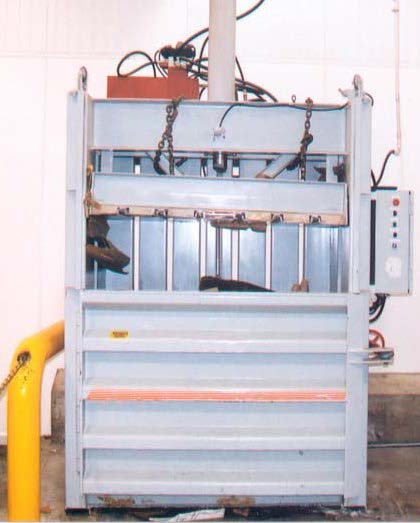

| Topic: Trash Compactor Fatality | |
| Date Issued: February 1, 2015 | Date Revised: |

The unit worked in such a way that when cardboard was piled evenly in the chamber, the plate could come down and crush the cardboard without putting stress on the cylinder rod and connection pin. If, however, cardboard was not placed squarely in the middle of the chamber when the plate was lowered, it compressed the cardboard unevenly, causing stress at the joints.
It was found that the vertical cylinder rod broke due to fatigue at the joint where the rod connected to the pin. Due to repeated bending of the ram during compression of the uneven cardboard, there was excessive force on the connecting area, which led to a failure at the joint. On several previous occasions, the ram became wedged sideways when compressing uneven loads, and a metal rod was used to pry it back into place.
The bale compactor was not certified nor designed by an engineer, and had been in service for only seven months at the time of the incident.
Reprinted February 2015